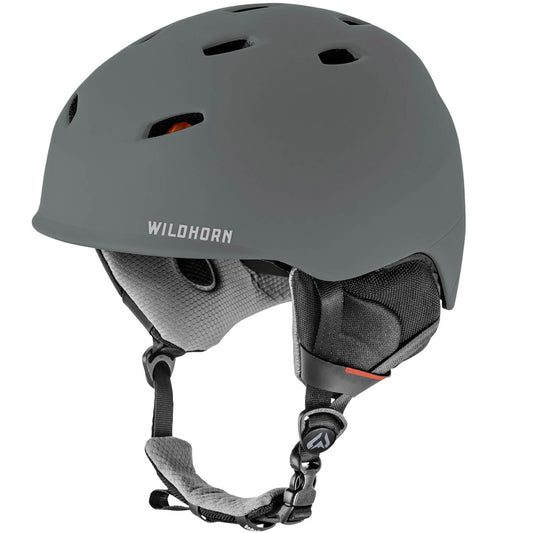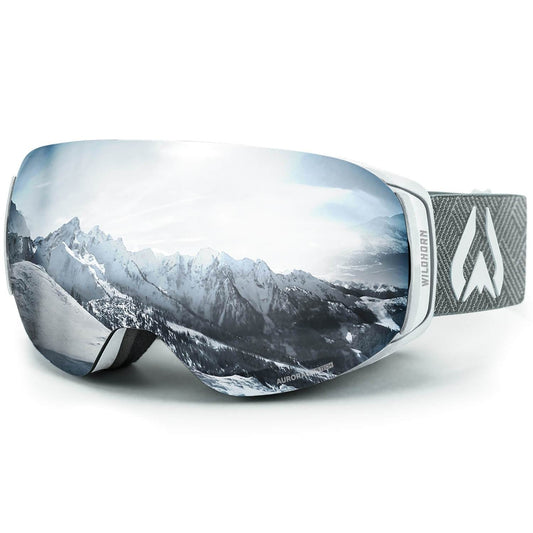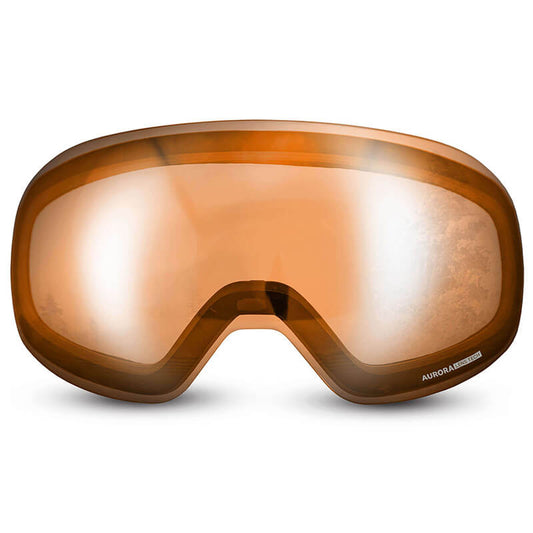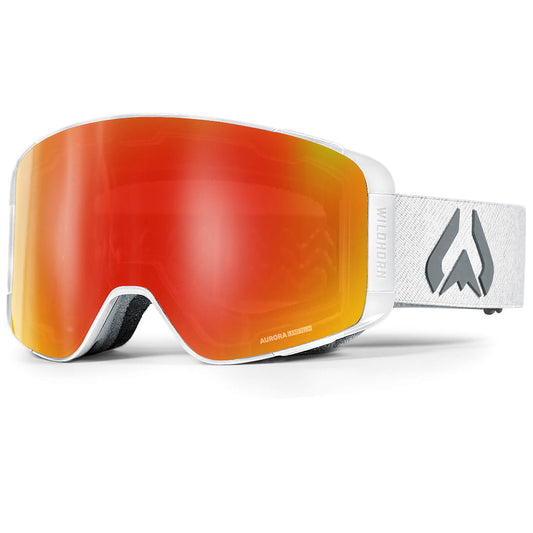The Ultimate Women's Ski Wear Guide
By: Kate SGearing up for a day of skiing takes a little bit of planning. Especially if you don’t have everything you’ll need to stay warm during a full day on the slopes. Not dressing warmly enough for the cold mountain weather can ruin what would otherwise be a perfectly good day of skiing.
I hate being cold about as much as I love spending time on the slopes, which is a lot. It’s hard for me to enjoy myself if all I can think about is how many more runs I think I can handle before rushing into the lodge to warm back up for a bit. On the flip side of being too cold, it’s important to layer up in such a way that you can shed a layer or two mid-day if you feel like you’re getting too warm.
Here are some tips for dressing for a warm and comfortable day of skiing with the proper women’s ski wear.
Base Layer
Your base layer or your “next to skin layer” should be fitted and made from a material that easily wicks away sweat. This layer is essentially long underwear. On warmer days, a thin polyester base layer should be fine. On colder days a polyester/merino wool blend will provide you with more warmth. Avoid cotton as much as you can while picking out any of your layers. If you're wearing anything made of cotton and it gets wet, you’ll feel soggy and cold for the rest of the day.
I would also suggest finding a base layer top with thumbholes to keep your sleeves from riding up during the day or while you’re putting on the rest of your layers.
Mid Layer
The purpose of the mid layer is to provide you with a little extra warmth on the slopes. You’ll be grateful you threw on a wool-blend top of some kind during those chilly lift rides. Once again, avoid cotton when choosing your mid-layer. A sweater or zip up jacket with a high neck to keep you warm will make an effective mid layer.
Personally, I like a slightly longer mid layer so that I am able to tuck it into my snow pants for better insulation. However your outer layer ski jacket will often have a snow skirt or other ways of protecting you from cold air so tucking in your mid layer isn’t actually necessary for staying warm.
Some skiers and snowboarders avoid using hooded sweatshirts as a base layer simply because they don’t like the way the hood bunches up behind their neck. An extra hood doesn’t bother most people so you’re the one who knows best whether or not a hoodie as a mid layer will be comfortable for you.
Outer Layer
Insulated Ski Jacket
Your outer layer is arguably the most important. Some first time skiers may wonder if they even need a ski jacket instead of their regular winter coat. The answer? You’ll have a much better time if you go with a ski jacket. Ski jackets are already designed to be wind and water resistant which is important for keeping you warm all day long. Your jacket should have enough room to comfortably fit your mid layer beneath but shouldn’t feel baggy. When looking for a good ski jacket, make sure it has a powder skirt to keep snow from getting beneath your outer layer. Some ski jackets are designed to zip into a compatible pair of ski pants to offer additional protection from the snow.
Choosing a ski jacket with several large pockets is important if you don’t want to be encumbered by a backpack. I prefer a coat with an inner pocket that has room for my phone and a hand warmer. The hand warmer and your body heat can keep the cold from sucking the life out of your phone battery.
Insulated, Waterproof Snow Pants

Ski pants, like your ski jacket, should be wind resistant with a high waterproof rating. A good pair of women’s waterproof snow pants will also have a boot cuff to keep snow from flying up the leg of your pants. You’ll be especially grateful for this after a wipe out. Getting snow in your pants is one of the worst kinds of cold. This is one of the reasons some people prefer a ski bib over snow pants. A bib is basically a pair of snow-overalls. The design of bib makes it harder for snow to get past your outer layer. In order for this to be effective however, you’ll want to make sure your ski jacket has a good powder skirt to ensure you are getting as much protection from the snow as possible.
If you’re looking for something with a more unique flair to it, old school ski jumpsuits are becoming popular again! A jumpsuit is definitely worth giving a try if you like the retro style. Of course it will be much harder to use the bathroom but at least a full coverage jumpsuit is cute and will keep you extra toasty.
Hands and Feet
Socks
It’s hard to enjoy spending a day on the slopes with popsicles for feet so the socks you choose are important. Many first time skiers may be tempted to wear their thick, plush, seasonal socks. While these may be comfortable at home, they’re a bad choice for the slopes. First off, if your boots fit correctly, it’s going to be really hard to fit your foot into your boots while wearing such a thick pair of socks. If they get wet in any way (including from sweat) they will be slow to dry and freeze your toes. Same goes for most high quality outdoor socks that you’d typically wear hiking or to work outdoors in the cold. Even if they’re designed to keep your feet warm, you’re going to have trouble fitting them into your boot. In addition to this, the ribbing from most non-ski socks will end up pressing into your leg in an uncomfortable way once you’ve been in your boots for a few hours.
A nice pair of ski socks may seem to be priced pretty high for just one pair of socks, but it’s one of the best purchases I've made. The thin material of the ski sock will help you get a more snug fit when you put your boots on. Ski socks should go past the length of your boot to prevent any kind of chafing on your leg from the boot. Some ski socks have additional padding that make them more comfortable and warm without interfering with your ability to comfortably slide on your boots. If you invest in a good pair or two of ski socks, set them aside and only use them on the days you go skiing so that they’ll last you multiple seasons.
Gloves and Mittens
Before putting on your gloves or mittens you’ll want simple liner gloves. Nothing fancy, just a cheap pair of touchscreen nylon or polyester gloves so that if you need to take off your gloves or mittens for any reason, you have an extra layer of protection. A basic pair of liner gloves typically won’t run you more than $12 on Amazon unless you want something higher end. I don’t see the need for high end liner gloves after already investing in a nice pair of mittens as an outer layer.
Since the liner gloves won’t be enough to keep your hands dry in the snow, you’ll want a pair of water resistant gloves or mittens to go on top. Gloves offer you more dexterity while mittens keep your hands warmer. I prefer mittens because I tend to run cold and find that I can still gear up just fine in mittens.
Head and Face
Helmet
I highly recommend wearing a snow helmet anytime you ski. Skiing is a high-risk sport and you definitely won’t regret choosing to strap on your helmet. Not only will your helmet keep you safe, but it will also keep you warm! Some people remove the liner inside their helmet to make extra room for a beanie beneath, but that is more of a style preference. Most quality ski helmets are designed to protect your noggin and keep you warm in the process.
Gaiter or Face Mask
Wearing a gaiter is not only important for staying warm, it also protects your skin from sunburns or windburns. Ideally your gaiter should be 100% polyester and not cotton. Cotton gaiters are much quicker to grow moist and wet from, well...your breath. Gross.

Before hitting the slopes with a new gaiter you may want to take a moment to cut a small ponytail-escape into it. Not only is this more comfortable, but it helps keep your gaiter in place if you have a hard time finding gaiters small enough to correctly fit your head. Pulling your hair back into a ponytail or braid will keep your hair from bunching up, itching, or feeling too hot during your run.
An alternative to a neck gaiter is a balaclava mask. A balaclava is essentially a gaiter with a hood. It goes over your head which effectively holds the mask in place. The material of a balaclava is thinner than that of a beanie so it won’t make it difficult to put your helmet on. You may find that you want to cut a ponytail hole in the balaclava as well though.
Snow Goggles
It’s important to choose a goggle lens that’s suited to the day of skiing you’re expecting to have. You can start by checking a goggles VLT (visible light transmission). The VLT can often be found listed along with the goggles other technical specs. For days that are bright and sunny you can get by with a lower VLT. On overcast days or if you’re planning on night skiing, you’ll want to go with a higher VLT percentage.
Depending on the brand, the color of the lens may have more to do with your personal preference rather than the technology of the lens. You should always carefully read the lens description and specs to make sure though.
There are even snow goggles designed to fit over your glasses if you need, so you can enjoy a day of skiing without sacrificing your vision. You’ll want to pick a pair of goggles that fit snug against the rim of your helmet. This will protect your skin, help you see more clearly on the slopes, and keep you from looking like a total noob on the slopes. A gap between your helmet and snow goggles is a sure sign to everyone on the slopes that you’re a newbie.
When preparing for a long day of skiing, it’s always worth it to put some time into planning out your layers. They should be comfortable enough for you to wear all day while effectively keeping you as dry and warm as possible. If you plan on spending a lot of time on the slopes, take the time to find some good outerwear and avoid cotton at all costs. You don’t need to break the bank to find high quality outwear. I do most of my gear shopping in the spring and summer when the prices are lower. If you're holding out for a sale before purchasing your outwear, lots of shops and ski resorts will let you rent the gear you need!







